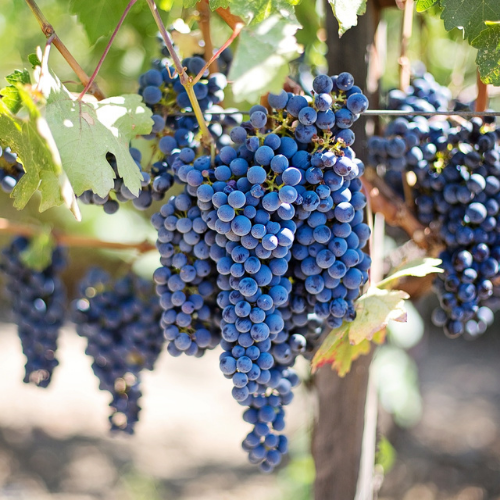
How To Grow Grape From Seeds
Share
Grape vines are one of the oldest plants to be cultivated.
You can grow grapes from seeds, but you need to be patient, follow the steps and for the greatest success in growing grapes be prepared to experiment:
- Prepare the seeds. Soak seeds in a small amount of water for up to 24 hours. Healthy, viable seeds will sink when placed in water. Discard any seeds that float.
- Stratify your seeds. Many seeds require a period of cold, moist conditions to begin the germination process. In nature, this is achieved when seeds sit in the ground over the winter. You can mimic these conditions through the process of stratification. For grape seeds, the best time to begin stratification is in December (the northern hemisphere winter).
- Prepare a bed for your seeds. Fill an airtight bag or other capsule with a soft medium like wet paper towels or sand, vermiculite or peat moss that has been dampened. Peat moss is the best choice for grape seeds because its anti-fungal properties will help eliminate seed-damaging mold.
- Tuck the seeds into the bed. Cover them with about 1/2" (1.25 cm) of growing medium.
- Refrigerate the seeds. The ideal temperature for stratification is a steady 35-40 ºF (1-3 ºC), so the refrigerator is a good place for this process. Keep the seeds refrigerated for two to three months. Do not allow them to freeze.
- Plant your seeds. In early spring, remove the seeds from the refrigerator and plant them in pots filled with good soil. Plant seeds individually in small pots, or in larger pots with at least 1 1/2" (3.8 cm) between them.
- Make sure your seeds stay warm enough. To properly germinate, the seeds need daytime temperatures of at least 70ºF (20ºC) and nighttime temperatures around 60ºF (15ºC). Use a greenhouse or warming mats to keep your seeds at the correct temperature.
- Keep the soil moist but not too wet. Mist the surface with a fine spray of water when it starts to look dry.
- Check for growth. Grape seeds typically take between 2-8 weeks to sprout.
- Transplant your seedlings. When your seedlings have grown to about 3" (8 cm), transplant them to 4" (10 cm) pots. For the healthiest plants, keep your seedlings indoors or in a greenhouse until they have reached a height of 12" (30 cm), have a good network of roots and have at least 5-6 leaves.
- Select a good location for your grapevines. To thrive, grapevines need the right amount of sun, proper drainage and a form of support.
- Choose a sunny spot. Grapes need 7-8 hours of full sun daily for best results.
- Make sure you have plenty of space. Space your plants about 8' (2.5 m) apart to allow for growth.
- Prepare your soil before planting. Grapes require well drained soil. If you have clay or other poorly drained soil, augment it with decomposed compost, sand or other soil amendments to increase drainage. Alternatively, use a raised bed filled with a good sandy loam mixed with compost.
- Check the pH of your soil before planting your grapes. Different types of grapes thrive best with different soil pH levels (5.5-6.0 for natives, 6.0-6.5 for hybrids, and 6.5-7.0 for vinifera), so it is best to either plant in an area with a pH level in the right range, or adjust your soil’s pH before planting.
- If you are planning to grow grapes for wine, be aware that different types of soil (e.g., sandy, silty, rich in limestone, or rich in clay) will affect the flavor of the wine.
- Fertilize your grapes after planting. Two weeks after planting, add a small amount of 10-10-10 fertilizer to the soil around the base of your young plants. Repeat this process once per year every spring after that.
- Take proper care of your plants, and prepare to wait. Grapevines take up to three years to start producing fruit. During that time, proper care and training of your plants is essential for the best fruit yield.
- Year One: Watch for growth. Choose the strongest three shoots on the plant and allow those to grow. Pinch off all others. The three remaining shoots will grow stronger and more vigorous.
- Year Two: Fertilize using a balance fertilizer. Remove flower clusters as they emerge; allowing the vine to fruit this early will deplete its energy. Remove any buds or shoots that grow below the three main ones you selected the prior year. Prune properly. Loosely tie long shoots to the arbor or trellis.
- Year Three: Continue fertilizing and removing low buds and shoots. During this year, you can allow a few flower clusters to remain and produce a small crop of grapes.
- Year Four and Later: Continue fertilizing and pruning. This year and thereafter, you can let all the flower clusters fruit if you wish.
- As you prune, be aware that grapes will fruit on one-year-old wood (i.e., wood that grew during the previous season).
